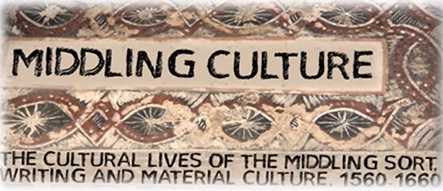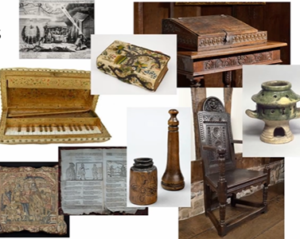
Professor Catherine Richardson brings the early modern parlour to life through virtual reality for viewers to experience where people played music and games, read, undertook business transactions, and wrote in Shakespeare's time.
The lives of the ‘middling sort’ in early modern England are one of Professor Catherine Richardson’s top interests. To uncover more about this important, but understudied, demographic, she and an interdisciplinary team of researchers are building on one important aspect of middling culture: literacy.
To maximize the impact of their project, Professor Richardson and the team have created a virtual reconstruction of an early modern parlour, with a 17-th-century extension to a medieval home that once stood along the High Street in Reigate serving as the model. The building was disassembled and taken to the Weald & Downland Museum where it was put back together piece by piece allowing the team to study every inch of the room they planned to replicate.
Using the latest scanning technology, the team were able to recreate the room’s exact dimensions and configurations. Then, Professor Richardson and other material culture experts combed through extensive databases to determine what the interior of the parlor would have looked like. Everything from the number of shelves in the room to the weight and feel of the curtains was meticulously researched. The result is what Professor Richardson calls ‘phenomenally realistic’—an accurate, virtual representation of a multi-purpose space that would have been in near constant use during its life. As with any room of this type, it is filled with objects both decorative and functional that enhance its feeling of authenticity, including books, a writing desk, ink and other tools used to practice literacy. These material objects help to conjure the ambience of a space where authors, poets and playwrights of the ‘middling sort’ (perhaps even Shakespeare) would have written.
By donning virtual reality headsets, members of the public will become part of an immersive storylab—a live participatory experience led by curiosity and discovery in which users interact with the room and its contents. What’s more, users can ‘inhabit’ each of four historical characters who were actually present in the house in the early 1600s—householders Samuel Wyld and Joan Wyld, an apprentice and a professional appraiser who visited the house to take a probate inventory. The characters are of varying social status, and each has a story which determines how they interact with the objects in the room. Users will be able to virtually pick up a book, handle a vase (careful not to drop it) or open the writing desk.
Seeing the room come to life in this way will help users understand the spaces where literacy—from business receipts to blank verse—was practised. The parlour served as a venue for music, reading, games, business transactions, receptions and as a writing studio. This context dispels the notion of the solitary writer locked in a lonely room toiling in obscurity to produce the next literary masterpiece. Putting literacy at the center of the home and life somehow frees up the writing process and opens it up for regular people, or in other words, for today’s ‘middling sort.’ [RG]
